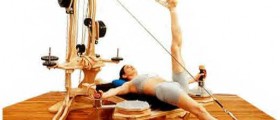The Purpose of Bandages
Bandages are medical items used for either securing and treating one's injuries or for keeping a medical dressing in place on someone's body. For these purposes, different types of bandages can be used since they range from the traditional ones, made of cloth, to specialized ones which are produced only to fit a specific body part. Naturally, there are specific methods used for wrapping one in bandages.
Basically, when doing it with a roll of bandage you are to roll it from the inside, applying the outer side to the wound or an injured spot. However, other methods may be used. Regardless, while you are wrapping one's body part in circular motions, you are to perform some crossings of the bandage and other methods which are bound to keep the patient secured, safe, and well-treated.
Finally, once the bandage has been placed correctly, it is to be cut from the roll and secured with a safety pin or with tape.

People use bandages and bandaging techniques to secure other people's wounds, making sure the dressings below will be kept in place. Also, these keep an injured joint secured, while, at the same time, providing cessation of bleeding and reduction of swelling in cases of other injuries.
- There were eight healthy volunteers. One roll (4.5?m) of four types of bandages with different extensibilities (0, 90, 108 and 218%) was applied to the leg in single-layer bandage fashion with eight random tensions. Then, the leg was wrapped with one to eight rolls in multi-layer bandage fashion.
- Each combination of bandage and application technique displayed an indigenous linear interface pressure-static stiffness index relationship.
- With single-layer bandage, lower extensibility was associated with higher static stiffness index at a given interface pressure. With multi-layer bandage, the static stiffness index at a given interface pressure was independent of the bandage type.
Finally, once a bandage has been applied, it can hold the injured body part in place, reducing the chances of an increase in injuries.
Different Bandaging Techniques
One of the most common techniques regarding bandaging is spiral bandaging. Namely, here, the bandage is applied through circular, spiral motions where each next round of bandage covers two-thirds of the previous round. This method is the best one while treating areas such as legs and forearms, even though it is used for many other injured body parts.
There is a variation of the spiral bandaging technique, used for people who have injuries in spots that are not universe in their circumference. Then, for the bandage not to fall off, people apply the reverse spiral bandaging, wrapping one's body part spirally but the other way around, keeping the bandage in place no matter what. Once this bandaging is done, people secure it on the outer side of the injured limb.
Finally, for joint injuries, figure eight bandaging is used. This type is considered to be one of the best and most secure. Here, you wrap the patient's wound or injury in circular motions. However, your circles consist of making motions so that the bandage is crossed in the middle, forming something resembling the number “8”.
- www.nhs.uk/common-health-questions/accidents-first-aid-and-treatments/how-do-i-apply-a-bandage/
- medlineplus.gov/ency/patientinstructions/000315.htm
- Photo couresy of Flickr-user simon_music by Wikimedia Commons: commons.wikimedia.org/wiki/File:Bandaged_Chico.jpg

















Your thoughts on this
Loading...